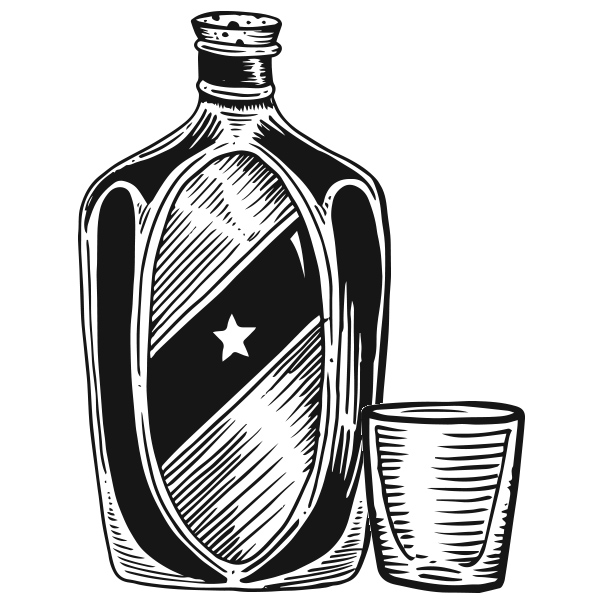Synchronicity is an elusive concept in restaurant design. Creating unity between a kitchen and a bar is a real challenge, and one that can easily go awry. It starts with an understanding of what makes a restaurant tick. In the case of Miller’s Guild, that means meat, wood, and smoke. Fittingly, its beverage program revolves around wood as well, with over a dozen casks forming not only a key part of the decor, but the centerpiece of the cocktail list.
Of course, barrel-aged cocktails are getting to be old news in Seattle, and bar manager Jake Kosseff admits that right away. “We’d seen everyone doing barrel-aged cocktails, and we didn’t feel like we had a lot to add to it,” Kosseff tells me. Instead they’re taking a step back, aging individual spirits in the casks instead. “We figured why not just age spirits? It fits with the butchering of whole animals that the kitchen does, and it’s something unique.” For me, the question is: Is the barrel-aging program just a clever PR gimmick, or does it bring something new to Seattle’s cocktail scene?
Miller’s Guild’s initial run of cask spirits plays heavily on gin, vodka, and white dog, or moonshine, whisky. With new barrels, it makes sense to pick spirits that will be receptive to the wealth of flavors that charred American oak offers. I was a bit dubious that lighter spirits like gin and vodka would take to barrel-aging, and my suspicions were confirmed after tasting each of them on their own. Only the whiskey (made with Captive Spirits’ See 7 Stars White Dog) truly shone, displaying the dark-chocolate and smoky notes that are the hallmark of bourbon but with a crisp and lively finish that belies its youth.
Naturally, the cocktail menu highlights the house-aged spirits, to varied effect. A few seem shoehorned in: Whatever effect the barrel-aging had on the vodka in the Silver Fox, it was lost underneath (admittedly tasty) pear-fennel shrub, lemon, and Cocchi Americano. Yet another drink led me to conclude that the barrel-aging program goes beyond a gimmick: the Gin Old Fashioned. While on its own the aged gin was unremarkable, combined with bitters and a brown sugar-based simple syrup, the woody, smoky notes from the barrel shine through. Combined with the gin’s herbaceousness, it’s a creative and compelling revision of a classic.
The sense of synchronicity is most noticeable in one of the few cocktails without a cask-aged spirit: the Scout’s Honor. A delicious and complex blend of Four Roses bourbon, Zirbenz pine liqueur, and maple syrup, garnished with rosemary and an alder-smoked salt rim, it tastes almost exactly like Miller’s Guild smells on a busy night, with the massive grill covered in roasting meats. It has a transporting effect even in an empty bar in the early afternoon; enjoyed during dinner service, it’s nearly transcendent.
Of course, it’s one thing to put together a great cocktail list when a restaurant opens; it’s another to keep that list fresh and lively. Kosseff and his talented bar staff have ambitious plans: everything from summer infusions to experimenting with used wine casks. As Kosseff says, “It’s fun to have creative people that you have to hold back, not egg on.” While some of their concoctions might be more interesting than delicious, it’s great to have another bar in Seattle pushing the limits of what a cocktail can be.
barcode@seattleweekly.com







